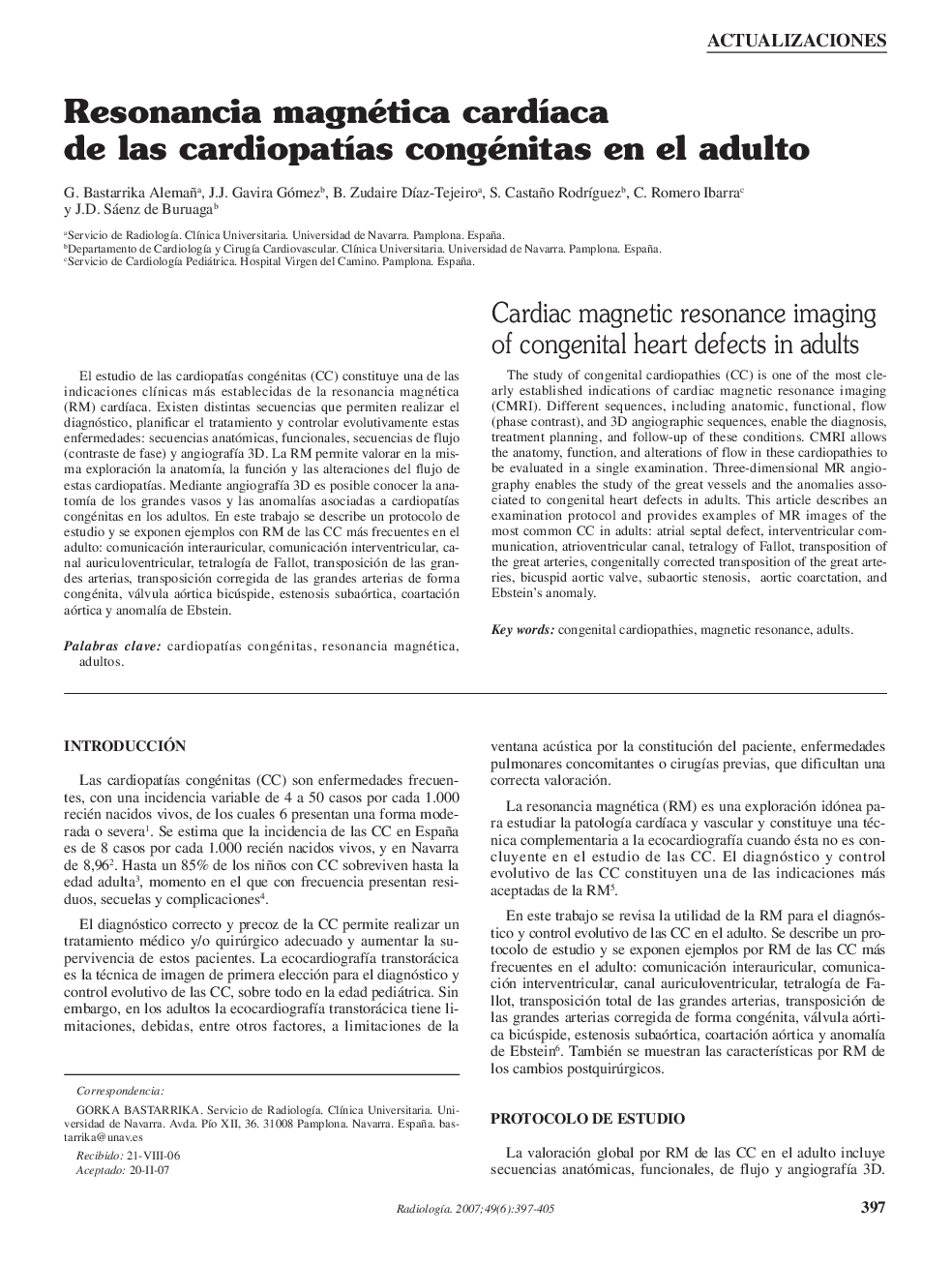| Article ID | Journal | Published Year | Pages | File Type |
|---|---|---|---|---|
| 4246256 | Radiología | 2007 | 9 Pages |
Abstract
The study of congenital cardiopathies (CC) is one of the most clearly established indications of cardiac magnetic resonance imaging (CMRI). Different sequences, including anatomic, functional, flow (phase contrast), and 3D angiographic sequences, enable the diagnosis, treatment planning, and follow-up of these conditions. CMRI allows the anatomy, function, and alterations of flow in these cardiopathies to be evaluated in a single examination. Three-dimensional MR angiography enables the study of the great vessels and the anomalies associated to congenital heart defects in adults. This article describes an examination protocol and provides examples of MR images of the most common CC in adults: atrial septal defect, interventricular communication, atrioventricular canal, tetralogy of Fallot, transposition of the great arteries, congenitally corrected transposition of the great arteries, bicuspid aortic valve, subaortic stenosis, aortic coarctation, and Ebstein's anomaly.
Related Topics
Health Sciences
Medicine and Dentistry
Radiology and Imaging
Authors
G. Bastarrika Alemañ, J.J. Gavira Gómez, B. Zudaire DÃaz-Tejeiro, S. Castaño RodrÃguez, C. Romero Ibarra, J.D. Sáenz De Buruaga,
